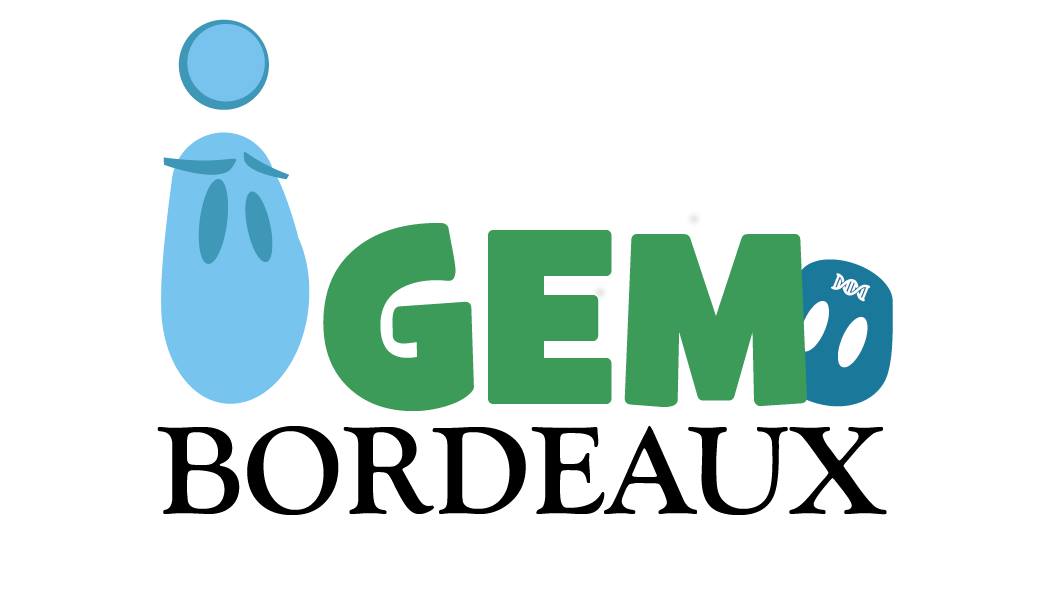(→Data recovery Bordeaux 2016) |
(→Data recovery Bordeaux 2016) |
||
| Line 31: | Line 31: | ||
[[File:T--Aix-Marseille--Bordeaux_logo.jpg|300px|350px|center]] | [[File:T--Aix-Marseille--Bordeaux_logo.jpg|300px|350px|center]] | ||
| − | In order to help the iGEM team Bordeaux, we read the paper <b>« Dynamics of plasmid transfer on surfaces »</b> and collect some data about their experiments on plasmids transfer | + | In order to help the iGEM team Bordeaux, we had to read the paper <b>« Dynamics of plasmid transfer on surfaces »</b> and collect and organize some data about their experiments on plasmids transfer. Thanks to this, the iGEM team Bordeaux can compare those results to their own computaionnal results. |
== Colaboration made by [https://2016.igem.org/Team:Pretoria_UP Pretoria 2016] == | == Colaboration made by [https://2016.igem.org/Team:Pretoria_UP Pretoria 2016] == | ||
Collaborations
Our collaborations
Modeling for Toulouse 2016
Introduction
We conceived a model in order to handle questions concerning the following situation: A bacterial growth is carried out in a bioreactor, continually supplied in substrate. Bacteria can possess 2 type of plasmids:
- plasmids 1 carry the toxin A gene and the anti-toxin B gene
- plasmids 2 carry the toxin B gene and the anti-toxin A gene
So during the growth each bacterium can have no plasmids, either one type of plasmids, or both types.
The aim of the model is to assess the evolution of plasmids throughout the culture, to determine which parameters can matter in the loss of those plasmids, and to precise what are the probabilities for a bacteria to loose its plasmids during cell division. As a plasmids can be a disadvantage for growth (energy spent into replicating processes) or a advantage (protection against a toxin) this question is hard to answer. But in this situation, where one type of plasmid can influence on the presence of the other type of plasmid in (and reciprocally) in the same bacteria, the question become too tough to answer and only a mathematical model can resolve such a interrogation!
Equations
EQUATIONS DE 1 A 17
Progamming code
METTRE LE CODE DE FRANCOIS
Results
METTRE LES COURBE
Data recovery Bordeaux 2016
In order to help the iGEM team Bordeaux, we had to read the paper « Dynamics of plasmid transfer on surfaces » and collect and organize some data about their experiments on plasmids transfer. Thanks to this, the iGEM team Bordeaux can compare those results to their own computaionnal results.
Colaboration made by Pretoria 2016
★ ALERT!
This page is used by the judges to evaluate your team for the <a href="https://2016.igem.org/Judging/Medals">team collaboration silver medal criterion</a>.
Delete this box in order to be evaluated for this medal. See more information at <a href="https://2016.igem.org/Judging/Evaluated_Pages/Instructions"> Instructions for Evaluated Pages </a>.
Sharing and collaboration are core values of iGEM. We encourage you to reach out and work with other teams on difficult problems that you can more easily solve together.
Which other teams can we work with?
You can work with any other team in the competition, including software, hardware, high school and other tracks. You can also work with non-iGEM research groups, but they do not count towards the iGEM team collaboration silver medal criterion.
In order to meet the silver medal criteria on helping another team, you must complete this page and detail the nature of your collaboration with another iGEM team.
Here are some suggestions for projects you could work on with other teams:
- Improve the function of another team's BioBrick Part or Device
- Characterize another team's part
- Debug a construct
- Model or simulating another team's system
- Test another team's software
- Help build and test another team's hardware project
- Mentor a high-school team


